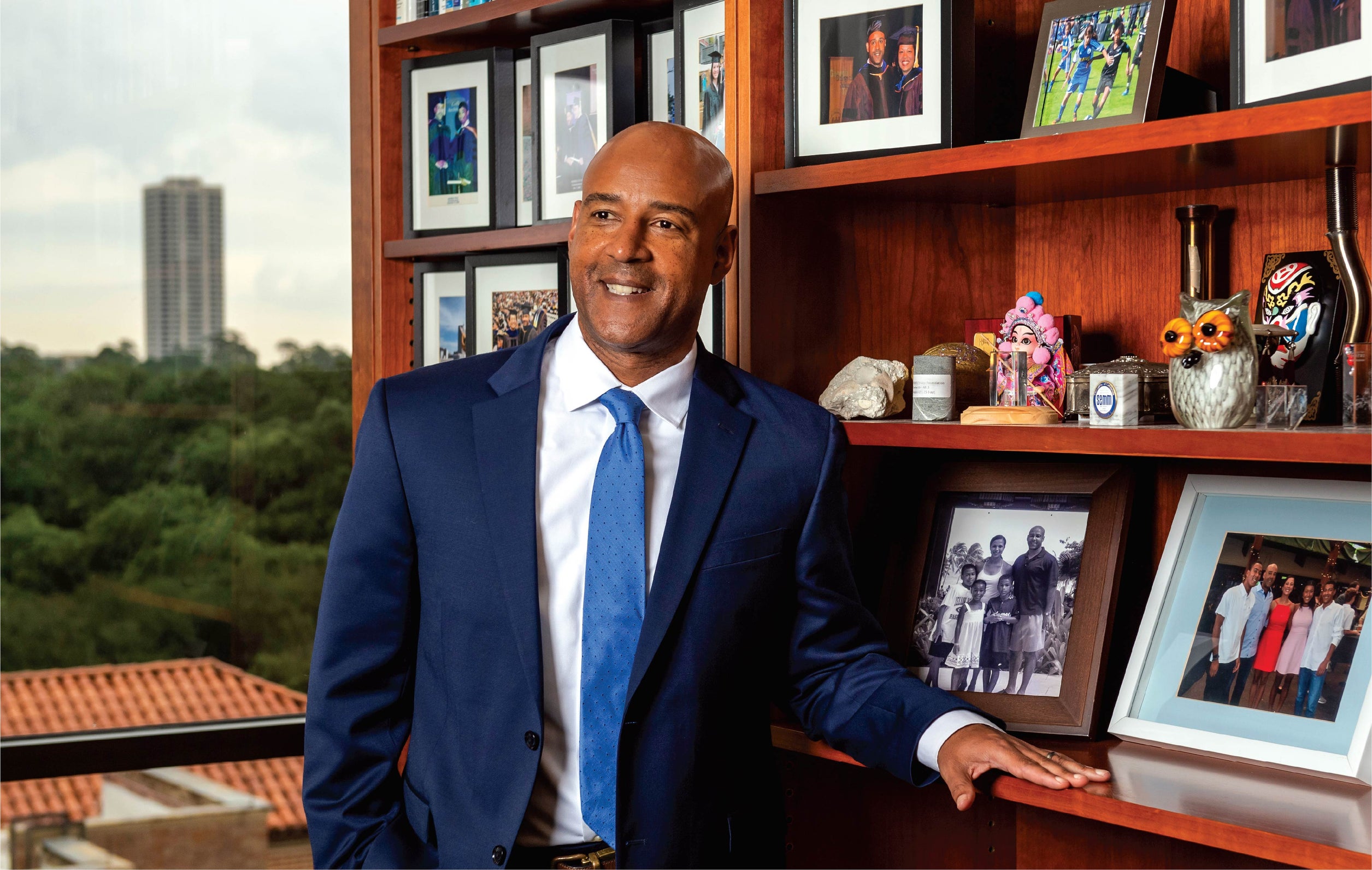
When John F. Kennedy made the bold proclamation to put a man on the moon in less than a decade, he knew that the technology to do so wasn’t yet invented. He also recognized a convergence of talent and technology assembling in Houston and the opportunity to launch a new era of innovation — and he chose Rice University to announce his moonshot.
To Provost Reginald DesRoches, who oversees Rice’s 8,500 students, eight schools and more than 700 faculty, JFK’s famous “moonshot speech” at Rice Stadium nearly 60 years ago still inspires a spirit of exploration and determination.
“It’s pretty audacious, then or now, to say that we’re going to make the impossible, possible,” DesRoches reflects. “It isn’t about being overly confident, but a recognition that we have ability and a sense of purpose. You’ve seen this play out with the artificial heart, digital signal processing, nanotechnology, vaccines — Rice has had a hand in all of these innovations.”
Today, DesRoches says, Rice is poised to take the next big leap. He points to a series of significant investments that include a historic $100 million gift from the Robert A. Welch Foundation to establish a world leading materials science institute, a new Rice-led Ion district to spur tech innovation in Houston, and investments in leading neuroengineering and quantum science programs, among others.
“We’re experiencing a convergence of talent at Rice that is very exciting,” DesRoches explains. “Now we have to leverage this moment of opportunity. That means continuing to attract exceptional faculty and accelerating the kind of interdisciplinary research that Rice is known for, and that ultimately leads to life-changing discoveries.”
At the center of this strategy is the highly anticipated Engineering and Science Building, which will be built at the site of the former Abercrombie Laboratory. The planned 266,000-square-feet, five-story research building will be home to some of Rice’s most prolific labs spanning materials science, chemistry, nanotechnology, engineering, physics and computational science.
In addition to state-of-the-art laboratory space across three floors, the building will include a dedicated prototyping lab, gathering spaces for collaboration, classrooms and offices to support increases in faculty, post-docs and graduate students. Situated alongside a newly renovated Maxfield Hall (formerly Mechanical Laboratory), the facility will be the centerpiece of a re-envisioned engineering quad that is more open and welcoming to industry sponsors, entrepreneurs and visiting faculty.
“Every detail of this facility will convey the quality of our research at Rice,” DesRoches said. “The best minds want to work on big problems, and this facility will send a clear message to them: your ambitions are supported here.”
Learn more about the engineering and science building at futureofresearch.rice.edu.
